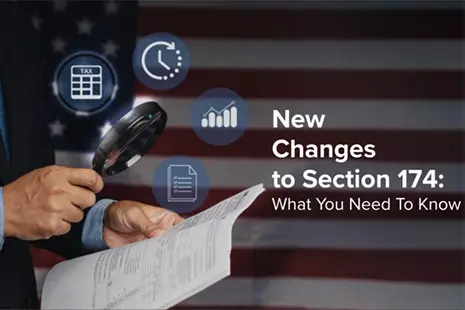New York has strong tax incentives for businesses looking to innovate in the state. Not only does it support credits for a wider array of industries than the federal government’s research and development tax credit, but it also offers extra incentives for businesses pursuing environmentally friendly projects. These are projects that aim to reduce greenhouse gasses or create clean energy solutions.
If you’re a business operating and trailblazing in New York, it’s worth the time and effort to pursue these credits because of the potential return. From real estate to employment, you can get credits in multiple categories, which means more returns for your business.
Navigating the application process and understanding what your business is eligible for can be complicated. Turn to tax experts, like Boast, to help you maximize your return. If you want to learn more about R&D tax credits, check out our comprehensive guide.
What Are R&D Tax Credits?
The R&D Tax Credit program is a general business tax credit under Internal Revenue Code section 41 for companies that incur research and development costs in the United States. It has been around since 1981. Under the R&D Tax Credit program, the US government provides billions of dollars every year to innovative businesses for developing new or improving existing technologies, products, materials, and processes.
Use Our R&D Tax Credit Calculator To Calculate Your Tax Refund
R&D Tax Credits in New York
New York has a robust program for R&D tax credits. Businesses can get 6% back of whatever amounts to 50% of their federal research and development tax credit for qualified research expenses (QREs) that are purchased in New York. For qualified green projects, it’s even higher at 8%.
NY’s R&D tax credit is housed within the state’s Excelsior Jobs Program, which boasts five separate tax credits for innovative businesses. Some of which are:
- Jobs tax credit – up to 6.85% of wages per net new job and up to 7.5% of wages for qualified green projects
- Investment tax credit – 2% of qualified investments, 5% of qualified investments in qualified green projects, and up to 5% of qualified investments in child care services
- Child care services tax credit – up to 6% of net new child care services expenses for operation, sponsorship, or direct financial program support
In addition, there’s also a real property tax credit for businesses located in “certain distressed areas” and for regionally specific projects.
New York also funds a Life Sciences Research and Development Tax Credit Program for life sciences organizations relocating to and operating in the state. The life sciences tax credit is 15% for a company that employs 10 or more persons and 20% for a company that employs fewer than 10 persons. This is a fully refundable credit that businesses can receive in cash. Businesses should be aware that the credit is capped at $500,000 per year, and they can only claim it for three years.
Which businesses are eligible for these credits?
Businesses applying for any or all of the credits must be a part of these specific industries and meet certain minimum new job creation targets:
- Scientific research and development firms – 5 net new jobs
- Software development firms – 5 net new jobs
- Financial services (customer service) back-office operations – 25 net new jobs
- Agriculture firms – 5 net new jobs
- Manufacturing firms – 5 net new jobs
- Back-office firms – 25 net new jobs
- Distribution firms – 50 net new jobs
- Music production firms – 5 net new jobs
- Entertainment companies – 100 net new jobs
- Life sciences companies – 5 net new jobs
- Other firms – 150 net new jobs and investing at least $3 million
To qualify as an eligible green project for the additional credit, companies must be in the agriculture, manufacturing, software development, or scientific research and development industries. They must be actively working on a project that supports products or technologies aimed at reducing greenhouse gasses or creating clean energy.
How To Claim New York’s State R&D Tax Credits
Businesses interested in claiming the credit must first complete a consolidated funding application and submit it to their respective Empire State Development (ESD) regional office. The application can be found here. When it’s approved, the business will enter into an agreement with the state stating it’ll meet the job and investment requirements in return for the tax credits.
The New York state tax credits can only be claimed if the tax returns are filed on a timely basis. In order to receive a certificate of tax credit for subsequent taxable years, the business must submit a performance report demonstrating that it continues to satisfy the applicable eligibility requirements within 30 days of the end of its taxable year.
What Qualifies as R&D Expenses in New York State?
Four broad categories define research and development work, also known as qualified research activities (QRAs). They include:
- Improved business component – Work done to develop new or improved products or processes
- Technological uncertainty – Work done to find a new solution or method that’s previously been unsolvable with publicly available information or knowledge
- Process of experimentation – Work done in a systematic process to evaluate one or more alternatives
- Technological in nature – Work done in physical sciences, biology, engineering, or computer science
The expenses that contribute to one or more of these categories, which are known as qualified research expenses (QREs), and count toward the tax credits include:
- Patents
- R&D supplies
- Salaries for US employees
- Salaries for US subcontractors
- Hosting costs (rentals for off-premise computers and other tech)
Frequently Asked Questions About R&D Tax Credits
What can you recover with R&D tax credits?
The R&D tax credits you can recover can be broken down into two parts — federal and state. The Federal portion is approximately 10% of eligible expenditures that can be used to offset Social Security taxes up to $250,000 per year, income taxes, or the alternative minimum tax (AMT). However, the state portion is different from state to state.
What are the benefits of R&D tax credits?
R&D tax credits can be used to offset the employer portion of Social Security taxes up to $250,000 for each fiscal year.
The Social Security tax offset allows qualified small businesses to receive a benefit for their research activities regardless of profitability. R&D tax credits can also be used to offset income taxes if you’re in a taxable position, which is dependent on your previous tax return statements.
R&D tax credits can also be used to offset the alternative minimum tax (AMT) if you have less than $50 million in average revenue for the three previous years and you owe AMT in the current year.
How do you prepare the documents for R&D tax credits?
Although the R&D Tax Credit program can help your business recover large amounts of your research and development spend, claiming the tax credits is a complicated process. You’ll need to provide evidence in the form of receipts and invoices for QREs.
The IRS and state revenue collection agencies have their own requirements, but many follow the federal guidelines for their state’s credits. Requirements for documentation include:
- Documents need to be contemporaneous, meaning the R&D expense needs to be documented as it occurs. The bigger the claim, the more documents you’ll need to collect.
- There needs to be proof the work occurred in the fiscal year being claimed. All documents supporting the QREs need to be dated.
- Your claim needs to highlight technical challenges and substantiate the R&D work that was done. The challenges should reflect one of the four broad categories (as defined by the IRS) that qualify as R&D work.
Tax professionals with industry experience assure your claim for R&D tax credits is backed up well and offer a sufficient explanation of R&D activities should the IRS audit your organization.
Boast Finds the Credits for You — With No Upfront Fee
Boast combines AI-driven software that finds opportunities for credits with the professional touch of our in-house R&D and SR&ED tax experts. We’ll work to get your business larger returns faster with less work.
Our staff is made up of engineers and finance professionals backed by over 20 years of experience in the field. We stay engaged with your business throughout the year to help you identify R&D-eligible work, which enables us to provide information on other technology grants and financing opportunities.
And if the IRS reviews your R&D claim, we’ll defend you in the process and help to ensure your claim is successful. Get in touch with us now to request a free assessment and get started on your next R&D claim.


